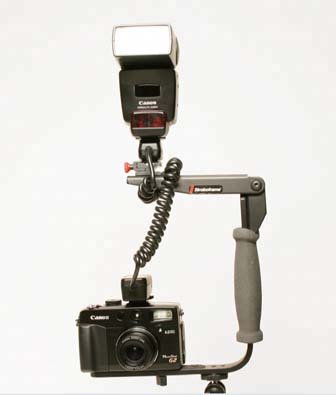3.12. Landscape and Nature Unlike portraiture, where you have to arrange the lights and the models, landscape photography demands a different discipline: patience. Nature calls the shots here. Your job is to be prepared and in position. 3.12.1. Shoot with Sweet Light Photographers generally covet the first and last two hours of the day for shooting (which half explains why they're always getting up at five in the morning). The lower angle of the sun and the slightly denser atmosphere create rich, saturated tones, as well as what photographers call sweet light. It's a far cry from the midday sun, which creates much harsher shadows and much more severe highlights. Landscape shooting is more difficult when the sun is high overhead on a bright, cloudless day. 3.12.2. Layer Your Lights and Darks Ansel Adams, the most famous American landscape photographer, looked for scenes in sweet light that had alternating light and dark areas. As you view one of these pictures from the bottom of the frame to the top, you might see light falling on the foreground, then a shadow cast by a tree, then a pool of light behind the tree, followed by more shadows from a hill, and finally an illuminated sky at the top of the composition. A lighting situation like this creates more depth in your pictures (and, yes, lets you "shoot like Ansel"). 3.12.3. Highlight a Foreground Object with Flash Sometimes you can lend nature a helping hand by turning on your flash to illuminate an object in the immediate foreground. Remember, just because your eyes can see detail in the dark area at the bottom of the frame doesn't mean that your camera can. Look for an interesting objecta bush, perhaps. Move the camera close to it and zoom out. Then turn on the flash and shoot. The effect can be stunning. POWER USERS' CLINIC
Built-In Flash vs. External Flash | | More expensive digital cameras offer serious photographers a wonderful feature: a place to plug in an external flash attachment. An external flash moves the light source away from the lens, which reduces red-eye, especially if the flash is on its own separate bracket rather than a hot shoe right on the camera. The external flash makes your camera's battery last longer, too, because it has its own batteries. You'll be grateful during long events like weddings. The most versatile way to attach an external flash is with a standard hot shoe right on top of the camera, as shown here. You can either connect the flash directly, or you can use a dedicated flash cord that allows you to move the flash away from the camera, but still retain communication between the two. Some cameras just aren't big enough to accommodate a hot shoe. To circumvent this problem, some camera makers have engineered a system that uses a tiny socket on the camera that connects to the flash via a proprietary cord and bracket. This system isn't the height of versatility, but it does allow you the flexibility of an external flash on a very compact camera. A wedding is one key example of a situation where you'll find this useful. When you're not the primary photographer, you won't get the prime shooting locations during big events (like the cake cutting). Therefore, you'll need all the flash power possible to get the shots even when you're out of positionanother advantage of an external flash unit. Finally, a detached flash attachment gives you more flexibility, because you can use it to bounce light off the wall or ceiling to provide fill lighting for certain shots. A good external flash with a dedicated cord costs at least $200, and, of course, only the fancier digital cameras can accommodate them. But as you become more serious with your photographic pastime, you'll find that external flashes help you capture shots that on-camera flashes just can't get.  |
 |
